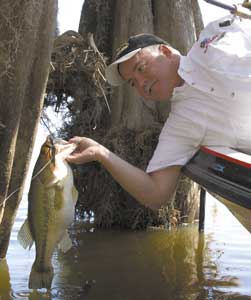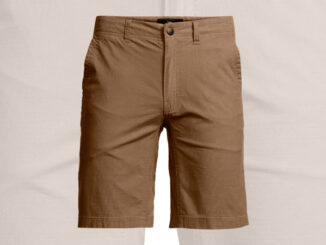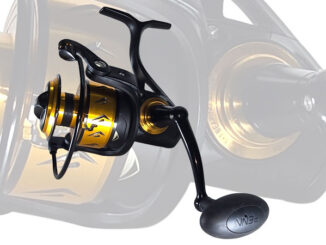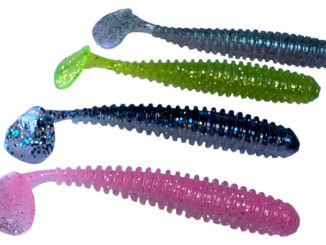
EDITOR’S NOTE: This is the fourth installment of a 12-part series exploring the best bass-fishing areas in the Bayou State.If only the cypress trees towering above Lake Bistineau could talk. Can you imagine the stories they’d tell?
They’ve had a bird’s eye view of the good and bad. They’ve seen Native Americans cracking mussel shells before Henry Shreve even thought about cracking up the logjam on the Red River. They’ve seen floodwaters creep up their trunks. And they’ve seen their knobby knees sticking up from the mud during the drawdowns.
Through it all, though, they’ve seen a lake that just won’t quit. Lake Bistineau has repelled everything that’s been thrown at it like bullets bouncing off Superman.
In the end, the lake has always retaliated — almost like it wanted to spit in the eye of anyone hurling obscenities its way. This lake won’t back down from anybody or anything.
“I’ve seen the lake bottom, and I’ve see it 7 feet high,” said Russ McVey of Southpaw Guide Service. “I’ve seen it have lush green grass, and I’ve seen it have nary a sprig. It doesn’t matter what happens, though. This lake has always rebounded, and in my opinion, it always will.”
Bistineau’s “tough guy” attitude makes it an awesome place to hold a tournament, according to McVey. The lake has continually produced tons of 3- to 5-pound fish over the years, and it takes 20 pounds to win most spring tournaments. Big bass are generally in the high 5- to low 6-pound range with a few 7-pounders showing up every now and then.
“It’s not only a good lake as far as numbers of decent-size fish,” McVey said. “From a guides’ standpoint, it’s a great lake because it is so scenic. It’s a beautiful, mystic lake that is great for tourism.
“Put those two together, and I rank it tied with Caddo right behind the Red River for the best fishery in Northwest Louisiana.”
McVey also sees a lot of unfulfilled potential in Bistineau. He suggested that if the governing agencies would manage for bass, and they would allow the grass to grow, Lake Bistineau could be one of the best fisheries in Louisiana.
Drawdown dilemma
The LDWF began the second of a series of three drawdowns of Lake Bistineau on July 15, 2005. The dam gates remained opened until Jan. 31. The three drawdowns were scheduled by the LDWF in an effort to save the bottom of the lake from choking due to muck and aquatic vegetation. Some people believe drawdowns are necessary to protect the lake, while others believe drawdowns hurt the lake. Therein lies the dilemma.
One angler who thinks the drawdowns have helped is Minden pro Homer Humphreys. In is opinion, the drawdowns were beneficial to the lake because they forced a lot of the big bass that were buried up in the unfishable grass out on the cypress trees, where they became easier targets.
“I told (LDWF) that they would be shocked at the number of 7- to 10-pound fish that would come out of here after the drawdown,” Humphreys said. “These are the fish that were buried up in that grass, and they wouldn’t move because all they had to do was open their mouths and something swam in.”
Humphreys said the latest drawdown was successful because of the drought combined with several hard freezes. In fact, it was so successful in reducing the vegetation that the third drawdown has been cancelled.
“The first one was a washout because it started raining hard in October of 2004,” Humphreys said. “It allowed some property owners to make some repairs to their docks, but it didn’t get enough of the grass. The second one accomplished everything they were trying to do.”
Classic cover
It’s not hard for anglers to figure out the primary cover at Bistineau. The lake is inundated with thousands of cypress trees. So many, in fact, that it leaves many anglers wondering where to start.
“The two things to remember about the trees,” McVey said, “is that cypress tree points and cypress tree thickets are the key areas within all those acres of trees. There are also a few other variations like isolated trees and leaning trees that you should look at. The key is to eliminate as many trees as you can so you can target the precise type of tree cover they’re on.”
Even though the trees dominate fishing patterns year round, there is an often-overlooked type of cover that McVey says has the potential to produce some of the biggest bass in the lake.
“The boat houses just don’t get fished because everybody’s out fishing the trees,” he said. “But there are certain areas of the lake where the fish will relate better to them than the trees. The best ones are those in 4 to 10 feet of water and that have some kind of brush cover underneath. That brush is going to attract bait, and the bait will bring in the bass.”
While not typically thought of as a structure lake, Bistineau does have its share of channel bends and slough mouths to make structure fishing productive at certain times of the year.
The best channel holes are found north of the Port of Bistineau. There are certain channel bends, points and slough mouths where fish will gang up, and that’s where the structure anglers congregate.
Seasonal patterns
• Spring — One of the best areas in the entire lake for spring fishing is also easy to get to from State Park No. 1. The Hay Meadow, as it’s called, is between Clark’s Bayou and Plum Orchard. It’s essentially a huge flat that’s got some deep channels and sloughs that run through it. It offers everything you need for spring.
McVey explained that this entire area could effectively be fished with three simple lures — a Texas-rigged lizard, a jig and a jerkbait.
“I’d say a Texas-rigged lizard catches more bass during the spring than any other bait,” McVey said. “I’ve had a lot of success with a black/blue or a black/red Wave Worm Tiki Lizard fished weightless in 3 feet or less and with a 3/16-ounce weight at 4 to 5 feet.
“As far as jigs, I use a 7/16-ounce Southpaw Jig (a custom-made jig that McVey produces) in a crawfish pattern like black/red, black/blue or black/brown/amber. I prefer a small trailer like a 3 1/2-inch Bass Pro crawfish. And it’s hard to beat a gold/orange Smithwick Rattlin’ Rogue out here for shear numbers of fish.”
The main spring pattern revolves around bass movement from deep to shallow water according to the water temperature. Try the timber on the edges of the channels and sloughs, the deep ends of the tree points and tree lines adjacent to deep flats if the water is 45 to 50 degrees.
From about 48 to 55 degrees, you should move onto the points, on the inside edge of the tree lines or to the secondary tree lines in 4 to 6 feet of water. As the water temperature climbs into the 60s, you should progressively move shallower on each of these tree scenarios.
“I overlap the temperature ranges because we’ll usually see the entire range during an early spring day,” McVey said. “You may be out fishing the deep edge of the trees early and catching fish, but you’re going to have to move on up as the water warms up during the day.
“The best advice I can give on a tree lake like this is concentrate on the specific type of tree when you get a bite. If it’s a leaner, then fish all the leaners you can find. If it’s a coffee-can tree, then fish all the coffee-can trees.”
McVey cautioned that anglers shouldn’t get caught up in the notion that all bass will spawn in shallow water. Big bass don’t get that way by spawning in shallow water where everybody will have a shot at them. The larger bass spawn around the isolated trees and the trees with large root balls out in about 9 feet of water.
“I love fishing those deeper trees with a shallow-diving crankbait like a 100 Series Bandit,” McVey said. “I’ll burn it up to the tree and kill it. They’ll nail it as it’s rising to the surface.”
Another crankbait pattern is available up the lake in the current holes. Look for some flow washing through the outside channel bends and the slough mouths. McVey said the fish will gang up in these spots and eat crankbaits like a 200 Series or Flat Maxx Bandit in chartreuse/blue or chartreuse/black. These fish are also known for eating green/white bucktail jigs.
• Summer — The early part of summer is pretty good on Bistineau, according to McVey. Bass will spawn in waves for about 10 weeks, and by the time the last group gets done spawning, some of the early spawners are already well into their summer patterns.
“This is the time of year to break out the soft-sinking baits like a Tiki Stick,” McVey said. “These work best early and late in the day when bass pull back into shallow water to feed. The water temperature isn’t very hot yet, and those fish will run in there to eat the bream that are on their nests.”
Topwaters are also a good choice for the summer. McVey suggested fishing Pop Rs and buzz baits around the trees at the edges of the deeper flats. Most of the bass won’t be very far from the deep water.
Perhaps the best action on Bistineau during the summer is the school bass. McVey explained that they’d start in July and continue well into September.
“Those schooling bass will eat a variety of baits,” McVey said. “My favorite way to catch them is to fish a white/blue or white/black 100 or 200 Series Bandit crankbait through the action. I think getting down a little deeper helps me target the bigger schoolers. Most of these fish aren’t giants, but if you can get down through the frenzy, you can pick up some good fish.
“Other good baits to try in the schools are chrome/blue Pop Rs and Tiny Torpedoes.”
When the schools go down, McVey suggested anglers switch to a Texas-rigged worm. The old-fashioned purple worms work well on Bistineau. Just bump them across the bottom beneath the last schooling action you saw.
“You can also get out on the deeper trees near the channel with that same worm and catch some fish,” McVey said. “Anywhere there’s a bend or a point with some kind of cover associated with it is liable to be good. A good area for this is from the state park up north to Crane Lake Slough. There are lots of sloughs dumping into the channel in that section, and the channel has lots of bends.”
• Fall — The cooler months right after summer can be very mischievous. There are typically lots of little fronts coming through during early October to December, and they can make for a good day, or a bad day, on the water.
“I’m generally throwing a 100-series crankbait in chrome/blue or chrome/black,” McVey said. “I’ll also fish a Texas-rigged red shad or tequila sunrise worm. If the water is clear enough, I might try Junebug too.
“I’m going to throw the crankbait around any leftover schooling bass, and I’ll fish the worm in the closest cover to the schools.”
Boathouses are also great targets for fall anglers because they will attract a lot of bream and bait. Many of these boathouses are loaded with brush cover that was planted by their owners during the drawdowns. McVey recommended fishing a bream-colored jig around the brush.
“You can also pick up a few on a spinnerbait during the fall,” McVey said. “I’ve found that if the water is clear, they like a small black spinnerbait — something like a 1/4-ounce Bass Pro Lazer Eye with gold or silver blades works really well. Throw the blades around the shallow thickets at the mouths of Big Toulon, Little Toulon, Spring Branch, Clark’s Bayou and Mill Creek.”
• Winter — McVey half-heartedly suggested anglers might want to bring their crappie poles along during a winter bass trip to Bistineau.
“Actually it’s not that bad,” he added. “There’s not any pressure on the lake from the middle of December through January. Since you aren’t in a competitive mode, you can slow down and soak a jig around the deep trees. I like black/blue or black/blue/purple with a matching craw. But if the water gets that tea looking tint to it, I’ll go with a black/brown/amber with a pumpkin craw.”
Surprisingly, McVey said anglers should also be on the lookout for schooling bass during the winter. They’ll come up on the edge off the shallow flats for a brief time. McVey said he keeps a crankbait tied on and ready to go just in case they come up near him during the day.
“This can be the toughest 45 days on the lake,” McVey said. “It all depends on how the weather plays out. I’ve fished in shorts and a T-shirt during the last part of December before. An unusually warm winter is a good time to keep throwing that spinnerbait. It’ll catch fish, and it’s a good way to cover water.”
Deadwood fall
McVey passed along a secret that has helped him catch plenty fish that aren’t even being targeted by other anglers during the fall. His secret is dead wood.
“For some reason,” he said, “these fish will move onto dead wood during the fall on Bistineau. They’ll relate to stumps, dead timber and boat docks. I don’t know if it’s because the trees are dropping their needles, or maybe the sap is going to the bottom of the tree and putting off an odor. All I know is that there are times during the fall when I can’t buy a bite on a tree, but I’ll start popping them when I move to the dead wood.”
Drawdown or not, the bass in Lake Bistineau are survivors. Like the towering trees above them, they have seen just about everything and rebounded from it all. These fish are a sure thing, and as McVey said, “I wouldn’t ever bet against Bistineau.”
To book a trip with Russ McVey, call 318-464-2277.


